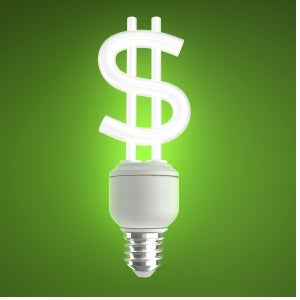“Remember, when you hear the siren, you have 15 seconds to find cover.” Such is life in the southern Israel town of Sderot only a few kilometers away from the Gaza Strip. Fortunately, for my tour, today’s rocket attacks fell on the outskirts of town and did not affect our visit. Israelis often point to such events as the reason why environmental issues are often not very high on the public policy agenda. How hard is it to spend any time thinking about global warming, when there are more tangible and immediate threats confronting you?
And yet, global warming is having an immediate and tangible impact here as well. Our visit to Sderot came after a tour of Israel’s largest desalination plant located in the neighboring town of Ashkelon on Israel’s Mediterranean coast. Israel is chronically short of water, consuming 2 billion cubic meters of water per year where the nation’s natural hydrology is capable of producing, on average, 1.2 billion cubic meters per year, according to Abraham Tenne, head of the Desalination Division of the Israel Water Authority. Mr. Tenne was blunt in reporting the facts. The Israel Water Authority expects average rainfall to decline by 15 percent by 2040, while Israel’s population is expected to continue to grow by 1.7 percent each year. The drought of 2008, where rainfall was only 65 percent of the current average, was a powerful reminder that today’s water situation is bad, and unchecked, it will only get worse.
Mr. Tenne is understandably proud of the building or upgrades to Israel’s three desalination facilities, which are key to solving the problem, but he is quick to remind us that, as important as this technology is to Israel’s future, it is a last resort. Israel’s consumption of 2 billion cubic meters of water by a population of roughly 8 million stands in sharp contrast to Arizona’s consumption of 8 billion cubic meters of water by a population of roughly 7 million. He visited Arizona last year for an international water conference where he was asked to speak on desalination, and was shocked to see flood irrigation – the practice of watering crops by flooding the field – commonly practiced. He contrasts this with Israel, where drip irrigation is standard practice for 95 percent of all agricultural production, and where the amount of water used is precisely controlled by technology that monitors the moisture at the root of the plant, delivering only what is required to maintain healthy growth. He then tells us about London, which just inaugurated its first desalination plant, while doing little to fix the local water system where 40 percent of the water flowing through the system is lost to leaks. And then, for the second time in two days, I hear of smart grid technology being deployed in Israel to pinpoint leaks.
Although recent discoveries of significant natural gas reserves off the Israeli coast suggest that Israel may be able to completely wean itself off coal, over 35 percent of the nation’s installed electric generation capacity comes from coal-fired power plants, including one right next door to the Ashkelon desalination plant we visited today. But even when the desalination process is driven by natural gas-fired power plants, as this facility is (it generates its own electricity and actually sells some excess production back to the grid) the fact of the matter is that Israel’s total water system – not just desalination, but the pumps necessary to move water around the country – consumers 6 percent of the total electricity produced in Israel. Thus, the battle to conserve water is also a battle to save energy, which in turn is a battle to avoid carbon emissions that contribute to global warming, and make Israel’s water situation worse.
We are spending tomorrow with some of Israel’s leading experts in solar energy, but already I am wondering why a nation so obviously blessed with ample, strong sunlight, seems to have so little invested in deploying solar power. Solar hot water heaters have been required here since 1980, and as my friend, and EDF consultant, Roger Duncan, often reminds me, solar hot water heating is often the most overlooked cost-effective solar technology, but given Israel’s pressing challenge of finding both secure and sustainable supplies of electricity, the government’s policy of 10 percent renewable energy by 2020 seems incredibly modest. A nation with the determination and technological prowess to erect the world’s most sophisticated missile defense system surely should be able to do better and tomorrow will be about finding out why not.













